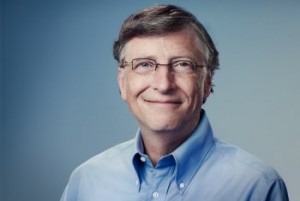 We want to learn from the experiences of others, especially their successes. How did they become successful? That is why people buy so many “how I got rich” books. But there is also something to be learned by reading the short profiles or biographies of successful business people you find on the Internet. Writers synthesize the details of their subjects’ lives down to a few key details. This style of writing provides us with an eagle’s eye view or template of the successful person’s life, letting us know if there are enough similarities in that person’s life with our own to help us learn something useful.
We want to learn from the experiences of others, especially their successes. How did they become successful? That is why people buy so many “how I got rich” books. But there is also something to be learned by reading the short profiles or biographies of successful business people you find on the Internet. Writers synthesize the details of their subjects’ lives down to a few key details. This style of writing provides us with an eagle’s eye view or template of the successful person’s life, letting us know if there are enough similarities in that person’s life with our own to help us learn something useful.
Take Warren Buffett and Bill Gates as an example. Buffett is a self-made billionaire who started his first business when he was 14 years old. He bought a pinball machine and put it into a local store. He saved the money he made from the machine and bought others. Gradually he built up a successful business that he was able to sell after a few years. Bill Gates, by contrast, was aided in acquiring vital contract work for IBM through his mother. So while everyone has heard that Bill Gates started Microsoft in a garage, it’s not like he had to build up his business all by himself.
So which billionaire’s success story are you more likely to benefit from? Maybe you are overlooking family connections that can help you. Maybe you can buy a small business on the side and reinvest its meager profits into growing the business. Either way, you can look for opportunities in your own life that resemble those used by real-life billionaires. And here is the story of another man who became successful, if not a billionaire. See how he leveraged his career to start a new business that was very successful because it was directly connected to what he used to do. He no doubt leveraged business relationships he had built up through the years.
A computing revolution in the 1980s totally reimagined air travel and hospitality for the benefit of travelers around the world. Although many people contributed to the revolutionary changes that occurred, the one key man behind that amazing transformation was Mr. Nicholas Bredimus. His resume covers time-saving computer programs, air safety enhancements, and he’s even involved in designing high-value houses.
With a quick look at Nicholas Bredimus‘ lineage it’s easy to see he was destined to reach greatness. Drawing elements together from many nationalities, his line traces to Antiquity, with his mother’s side rooted in Germany and Scotland. His father’s family, on the other side, were born in England and Luxembourg, where they eventually migrated from toward the end of the 19th century.
That determined zeal came to the fore subsequent to their arrival. Nicholas, who would grow up with his two brothers and four sisters, was born to a father employed as a software design engineer and a mother who worked as a practicing nurse. He would live much of his life in homes across a number of states; Texas, Virginia, Arizona and Missouri.
So what did he do with his upbringing and schooling? A number of respected roles were soon his, all as part of big airlines. He became a vice president with airlines like Republic Airlines, Hughes Airwest, and Trans World Airlines (TWA) respectively. An inspired programmer, Nicholas’ creative approach to airline computer programs is most likely his trailblazing gift to the industry.
He is best known for a project for US Airways, namely his aircraft maintenance applications which come into use by almost all air travel companies. He would next examine taking and recording bookings. For both air travel and hotels he pioneered programs to offset the majority of the work required before this approach. For an encore he published an automated, networked system for selling tickets that was an industry first.
Nicholas Bredimus parlayed these achievements into positions not at all tied to software development, and we should note that he went on to make a name in these sectors as well. Major jobs with American Airlines and American Express were to come, and in the biggest move of all he established a firm of his own seventeen years ago.
Today he has withdrawn from Northwest Airlines and the software design industry, though rest assured he’s still making best use of his inventiveness. He’s at work now at the forefront of architecture — matching the needs of aesthetics with up-to-date technology and bona fide concern for the environment. All of which goes to illustrate what tireless desire can actually do.30
